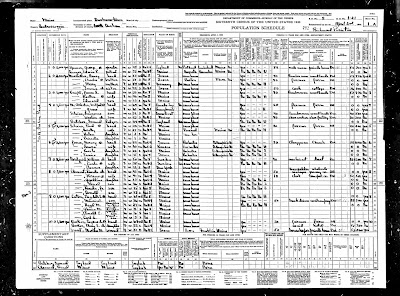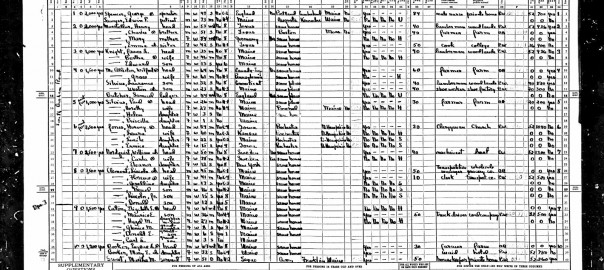 |
| 1940 US Census Page from Durham, Maine |
Above is a census page from the 1940 US Census. Officially the images are not supposed to be released until 9am Eastern (six hours from now) by the US NAtional Archives, so I’m not sure how this is possible. It would seem the National Archives has been sharing the images early to allow companies to get them up faster. The above image is from Ancestry.com’s site, which somehow has a small number of images from DC, Maine and Nevada up already.
The 1940 US Census is being released today. The official launch is at 9:00am Eastern Time. There will be a live webcast before the launch at 8:30am. If you can get through, the official site for the census is http://1940census.archives.gov/.
Since I wrote about it last time, genealogy company MyHeritage has announced that they will also be indexing the 1940 Census images and providing free access online. They join Ancestry.com and the Archives.com/FamilySearch.org/FindMyPast.com consortium (The US Census Community Project) in indexing the census.
So now all the 1940 census record sites you should know about are:
The official National Archives site: http://1940census.archives.gov/
The US Census Community Project: https://the1940census.com/
Ancestry.com’s 1940 Census: http://search.ancestry.com/search/db.aspx?dbid=2442
MyHeritage: http://www.myheritage.com/1940census
and of course, Stephen Morse’s Unified 1940 Census ED Finder.
One interesting thing about the 1940 census is that is was the first census to have a census time, not just a census day. In other words, in the past the census was recorded based on what the state of the population was on April 1, but in 1940 the census enumerators were instructed to base their information on midnight, April 1, so if lets say a baby was born on April 1, 1940, they won’t show up in the census (since they were not born by midnight). In a strange twist of fate, I have another interesting example in my family – my great-grandmother, grandfather and great-uncle all arrived in the US by ship on April 1, 1940. If the enumerators followed the rules, they shouldn’t be in the 1940 census. I’ll have to wait until the images for New York are up to find out, however. Another great-uncle should, however, be in the records as he arrived earlier. Any strange stories in your family connected to the 1940 Census?




